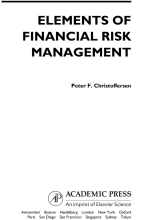Historical Simulation, Value-at-Risk, and expected shortfall - Pros and cons of Historical Simulation
6 important questions on Historical Simulation, Value-at-Risk, and expected shortfall - Pros and cons of Historical Simulation
The first pro's of historical simulation
What is the advantage of a model free nature
Cons of the model free nature
- Higher grades + faster learning
- Never study anything twice
- 100% sure, 100% understanding
A other darwback of histrorical approach has to do with the lengt of K
What is the Ghost feaatrue:
What is the drawbacks of multiday VaR
The question on the page originate from the summary of the following study material:
- A unique study and practice tool
- Never study anything twice again
- Get the grades you hope for
- 100% sure, 100% understanding































